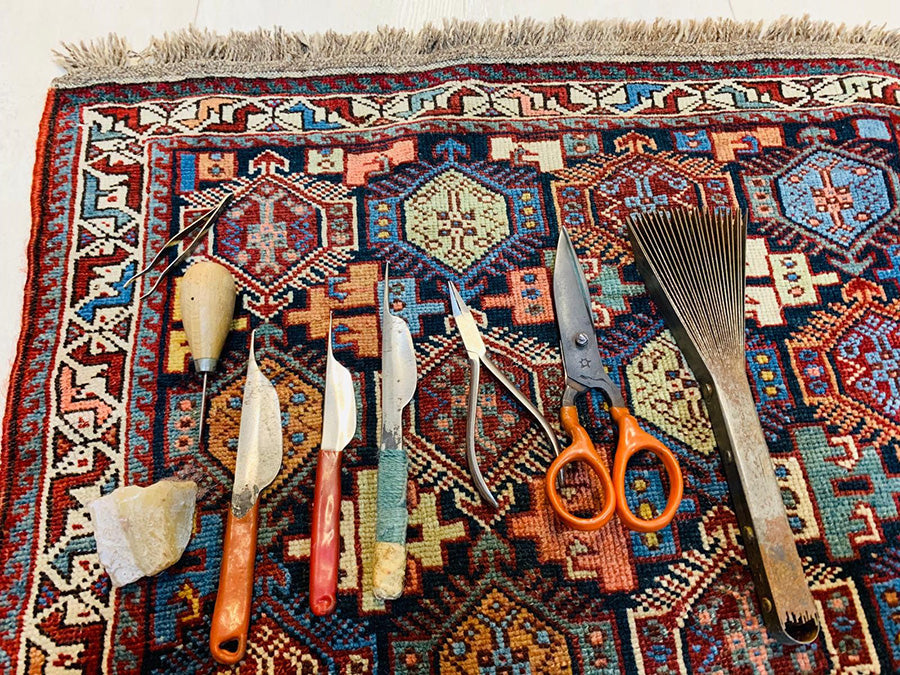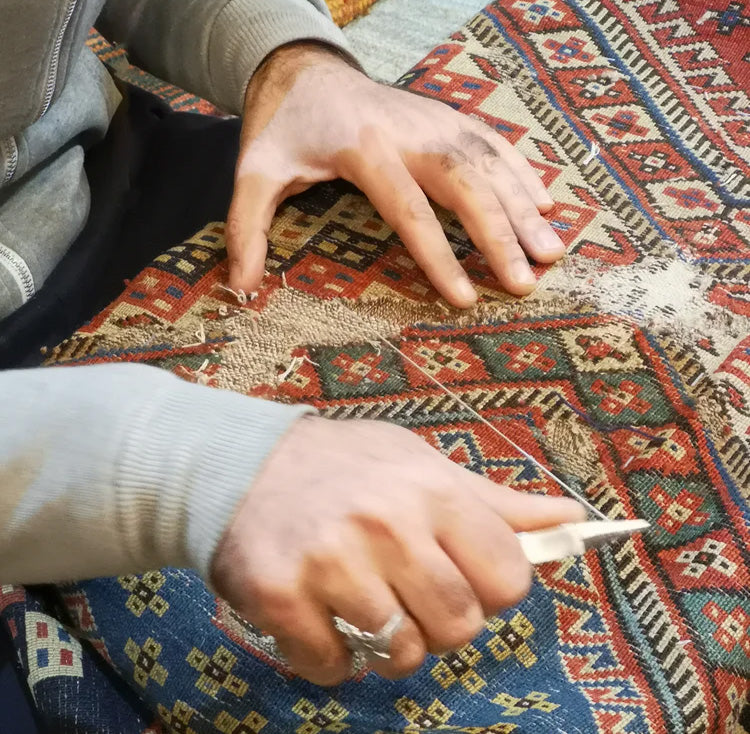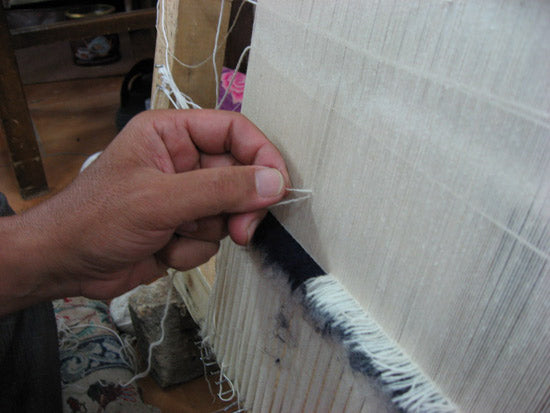Restoring Beauty in Handmade Rugs for 20 Years
At Little-Persia, we don't just repair rugs—we restore their inherent beauty and character. With 20 years of dedication to the craft, our expertise in Persian, Oriental, and hand-knotted rug repair and restoration is unrivalled in Glasgow and across the UK.

Meet Our Repair Specialist: 'Dustin'
At the heart of our operations is Dustin, our skilled Iranian Master Rug Craftsman and ex-weaver.
With decades of experience and an innate understanding of the craft, he works meticulously to restore each rug, regardless of its state.
Whether it's re-knotting areas of low pile, securing fringes and selvages, or repairing damage from moths or daily wear,
Dustin's craftsmanship is evident in every project he undertakes.

Our Promise of Quality
From securing and repairing foundations damaged or rotted due to water or fire damage to colour correction, we ensure each rug receives the careful attention it needs to preserve its value and charm.
We use traditional tools and methods passed down generations of expert weavers to deliver exceptional results.

Trusted Rug Repair and Restoration Service in the UK
Over the past 20 years, we have earned the trust and loyalty of customers throughout the UK. From museums and the National Trust to restorations for rugs later sold at auction for close to £100,000, to quick and simple fixes to secure cherished family rugs for years to come.
In 2020, Little-Persia were accepted onto the register of the Guild of Master Craftsmen, an acknowledgment of the skill and service levels provided to our valued customers.
We take pride in our customer-focused approach, offering a convenient rug collection and delivery service across the country.

The UK's Leading Rug Restoration Company
Send us images and details of your damaged rug for a free quote today.

In-House Repairs & Restoration
We carry out all our restoration work from our Glasgow showroom, so you will know where your rug is (and get photo updates if you wish) at all times.

Two Decades Of Lovingly Restoring Handmade Rugs
Since 2003 Little-Persia has being enhancing and prolonging the life of thousands of customers' cherished handmade rugs.
Handmade Rug Repair FAQs
How do I know if my rug is handmade?
Handmade rugs fall under two categories: hand-knotted and woven (Kilims, Dhurries, Suzanis and Soumaks).
While hand-tufted rug are technically made by hand, we would not categorise these as handmade for cleaning purposes.
To discover if your rug is handmade or knot (excuse the pun!) - follow our guide on "how to tell if my rug is handmade?" or simply email us images and size details and we'll let you know what your rug is, where it's from and how much cleaning would cost.
How does the rug repair and restoration process work?
First, we assess the condition of your rug to identify areas that need repair or restoration. This could involve re-knotting areas of low pile, securing fringes and selvages, colour correction, or repairing foundations rotted due to water or fire damage. Then, our expert, Dustin, will carefully restore your rug using decades of experience and expertise.
How much does handmade rug repair cost?
While we have standard pricing for our handmade rug cleaning, there is no one-size-fits-all for rug repair and restoration.
We can give quotes for work using photos, video or live chat where we can discuss the options available for repair.
Most restoration projects will offer alternative methods of repair, from securing what has been there, to re-weaving the foundation to re-knotting areas of pile.
Can you repair my handmade rug?
Little-Persia have been repairing and restoring rugs throughout the UK for twenty years.
With the help of our in-house experienced ex-weaver we can lovingly restore your treasured family heirlooms to their former glory, or simply secure your rug to prevent damage so you and your family can enjoy your handmade rugs for years to come.
Visit our handmade rug repair section to discover more.
Can you treat colour run or dye migration?
Colour run is often the result of washing the rugs at home, or without pre-checks, or can be the result of liquid spills.
We can remove colour run (dye migration) however this can be a highly labour-intensive process if it is wide spread.
We would look at colour-run on a case by case basis as it may not be justifiable to treat larger areas, or depending on how or where the colour has bled to may determine what can be done. This would fall under our rug restoration services.
What if my rug is damaged by moths or general wear?
We specialise in repairing rugs damaged by moths and general wear.
Our restoration process can revitalise your rug, preserving its original charm and value.
Will you collect and/or deliver my rug?
We can collect (and deliver) your rug for a fee, or it can be brought to store.
This can be quoted based on the size and weight of the rug(s).
Some handmade rug cleaning specialists offer free delivery and collection, however they incorporate these costs into their pricing which is much higher.
We attempt to be as transparent as possible with our pricing. Should you need collection and delivery we endeavour to seek the best possible option and price for a courier service, or collect and deliver personally if local.
Can I drop my rug off?
Certainly, rugs can be dropped off at any time during our opening hours (although it may be best to call ahead to ensure Reza is in should your rugs need any specific quotes for instance on repairs you would like carried out).
Our opening hours are Mon-Sat: 10am - 5pm and Sun 12-4pm.
Will you repair my rug in my own home?
We are unable to repairs rugs in your own home. The time it takes to repair rugs would mean poor Dustin would be sitting in your house for potentially days, or weeks. And for smaller jobs the travel expenses would not justify the costs.
However, we can have the rugs collected from your home and returned after being professionally cleaned.
What types of rugs can you repair and restore?
At Little-Persia, we are skilled in repairing and restoring a variety of handmade rugs, including Persian, Oriental, Kilims, Berbers and other unique hand-knotted rugs.
We are unable to provide repair services for machine-made rugs (and it would not make financial sense to customers in any case).
